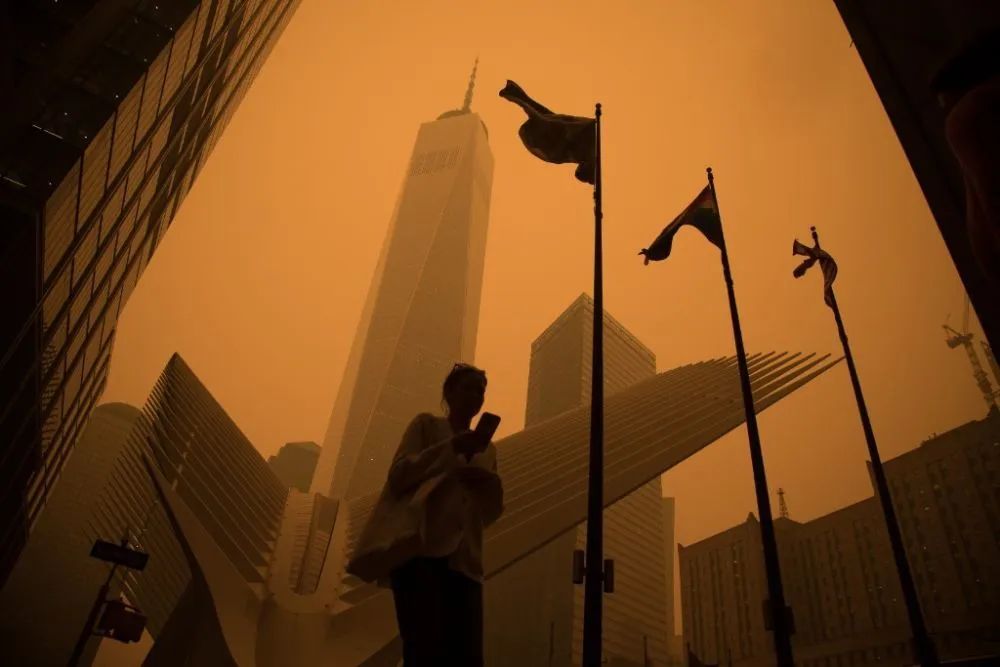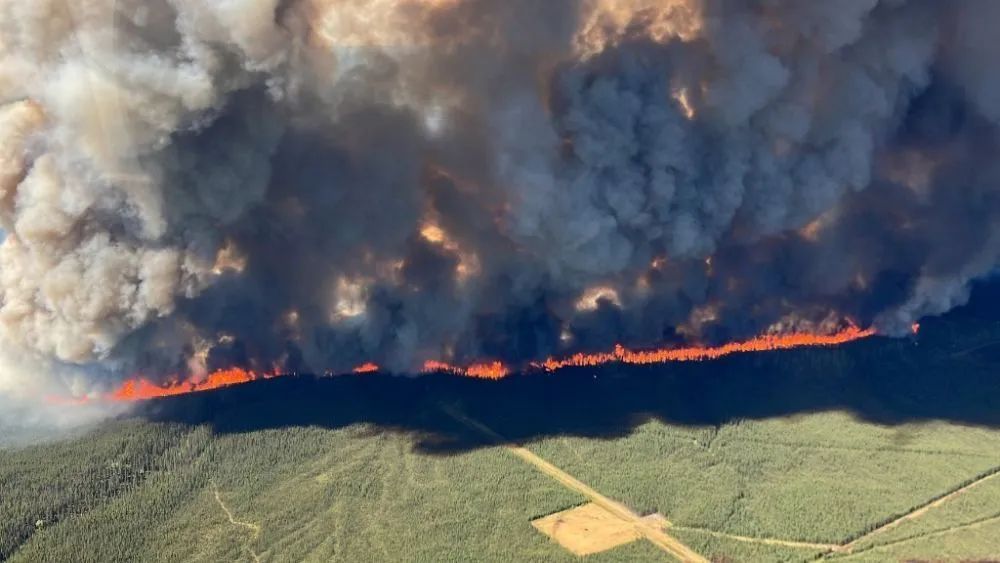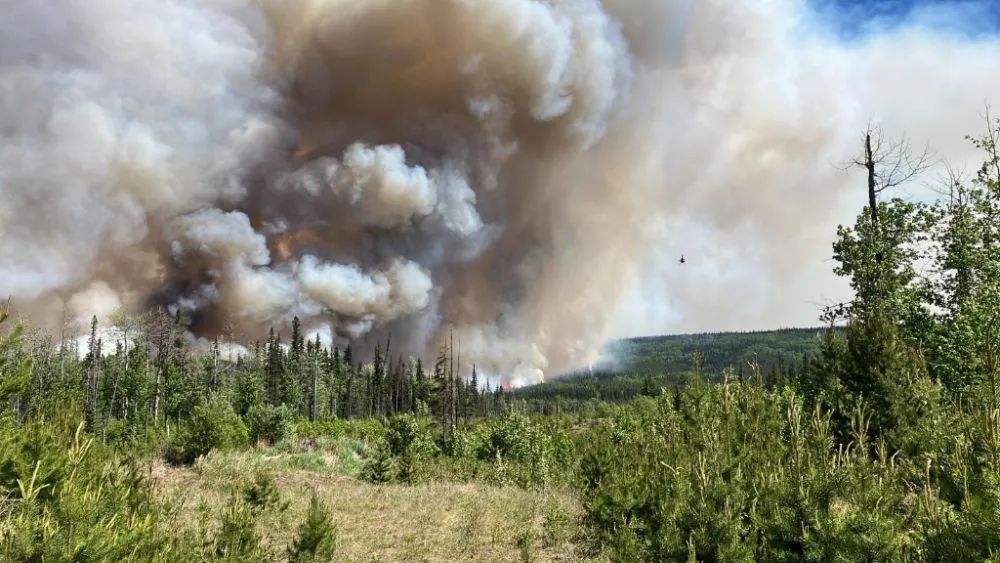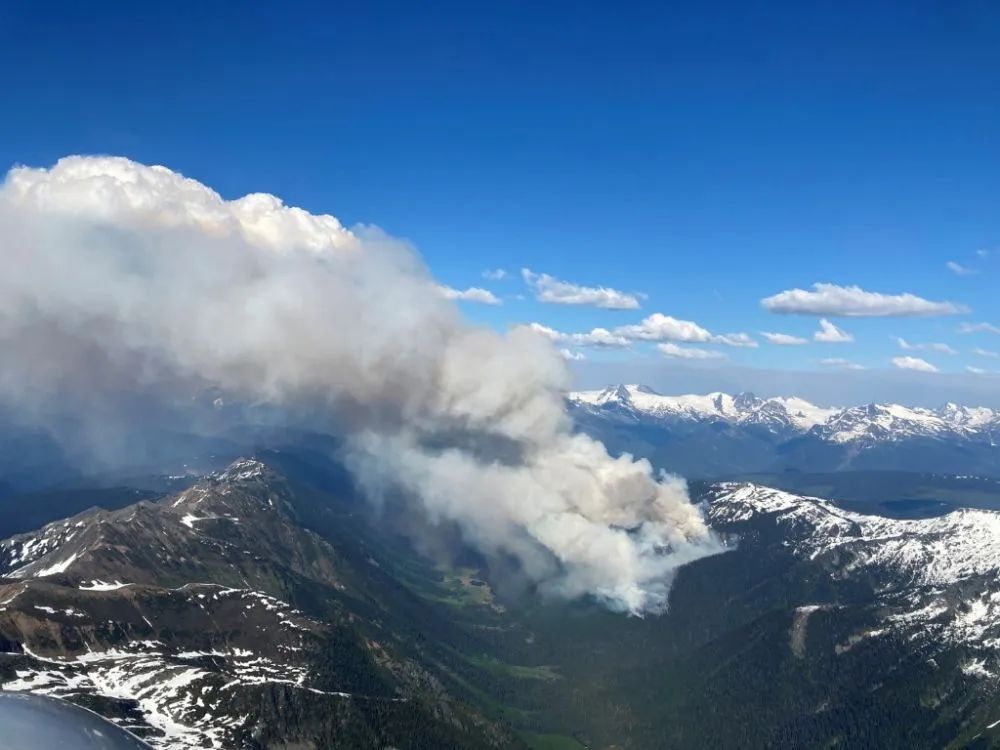According to CCTV News citing Canadian local media reports on June 11, there are still 79 active wildfires in British Columbia, Canada, and highways in some areas are still closed. The weather forecast shows that from June 10th to 11th local time, there will be 5 to 10 mm of rain in most parts of southern British Columbia, Canada. Rainfall is still difficult in the north, and the situation is still severe.
On May 27, wildfires spread in northeastern British Columbia, Canada (Photo source: Xinhua News Agency, photo courtesy of the British Columbia Wildfire Administration)
As the smoke from the wildfires in Canada traveled all the way south through New York, and even drifted to Alabama in the southeastern corner of the United States, the entire United States fell into a state of “talking about smoke”. A large number of Americans are rushing to buy N95 masks, and Amazon’s best-selling air purifier is also sold out…
New York’s air quality is the worst in the world, N95 masks and air purifiers are sold out
Hundreds of wildfires raging across Canada are causing a dramatic deterioration in air quality across the United States. New York has continued to be the city with the worst air quality in the world for the past two days. Some weather experts described New York City as being on Mars.

On June 7, a pedestrian walked near the World Trade Center in Manhattan, New York, USA, which was shrouded in smoke and dust
(Source: Xinhua News Agency)
Texas-based mask maker Armbrust American said demand for its products surged this week as smoggy skies in New York, Philadelphia and other cities prompted health officials to advise residents to wear them, the Financial Associated Press reported on June 10. Face mask. The company’s chief executive, Lloyd Armbrust, said sales of one of its N95 masks rose by 1,600% between Tuesday and Wednesday.
Doctors and medical officials recommend that N95 masks are the most effective way to filter the tiny particles in smoke. New York Gov. Kathy Hochul said on Thursday that the state will provide 1 million N95 masks to the public in response to the worst air pollution on record caused by wildfires in Canada.
In addition to face masks, makers of air purifiers said they also saw a surge in sales this week. On Amazon.com, sales of air purifiers have jumped 78% over the past seven days, while sales of air filters have jumped 30%, according to Jungle Scout. Jungle Scout pointed out that sales of an air purifier by Levoit, a brand of Hong Kong-listed company VeSync, have increased by 60% in the past week.
According to the latest query on Amazon’s US website, the current Amazon high-efficiency filter air purifier sales ranking is a relatively cheap air purifier from Levoit, which starts at only $77. This product is currently sold out. Another relatively pricier air purifier made in China by the company came in eighth on the list.
Wildfires continue in eastern Canada
According to news from Xinhua News Agency on June 10, wildfires spread in British Columbia, western Canada, on the 9th, and a large number of residents were ordered to evacuate. Meanwhile, wildfires continue in eastern Canada. The haze caused by wildfires floated over the East Coast and Midwest of the United States, and haze particles were also detected in Norway.
In British Columbia, about 2,500 residents of the “Tumbler Ridge” in the northeastern scenic area were asked to evacuate; the central Peace River area was hit by the second largest wildfire in history, and the authorities expanded the coverage of the evacuation order.
This wildfire was photographed on June 8 near the Kiscatino River in West British Columbia, Canada
(Photo source: Xinhua News Agency, photo courtesy of the British Columbia Wildfire Administration)
According to Reuters, temperatures in parts of British Columbia have exceeded 30 degrees Celsius this week, above average for the period. Forecasts are calling for rain this weekend, but there is also the possibility of lightning that could ignite more wildfires.
In Alberta, on the east side of British Columbia, more than 3,500 residents were ordered to evacuate due to wildfires, and many parts of the central part of the province have issued high temperature warnings.
Since the beginning of this year, 2,372 wildfires have occurred in Canada, covering an area of 4.3 million hectares, far exceeding the annual average value of the past 10 years. There are currently 427 wildfires burning across Canada, about a third of which are in the eastern province of Quebec. According to a report from the Quebec provincial government on the 8th, the fire situation in the province has stabilized, but 13,500 people are still unable to return home.
Affected by wildfires in Canada, many areas in the neighboring United States were shrouded in smoke and haze. The U.S. Meteorological Department issued air quality alerts to many places on the East Coast and the Midwest on the 7th. Flights at some airports were delayed, and school activities and sports competitions were affected.
According to data released by the U.S. Environmental Protection Agency, the air quality index in Syracuse, New York, New York City, and Lehigh Valley, Pennsylvania, all exceeded 400 that day. A score below 50 indicates good air quality, while a score above 300 is a “hazardous” level, meaning even healthy people should limit their outdoor activities.
In addition, Agence France-Presse quoted experts from the Norwegian Institute of Climate and Environment as saying on the 9th that Canadian wildfire haze particles were also detected in southern Norway, but the concentration was very low and did not increase significantly, which did not yet constitute environmental pollution or serious health risks.
Why do wildfires get out of control?
According to a report by CBS, since May, wildfires have spread across Canada, causing tens of thousands of people to flee their homes. The smog from the burning has affected East Coast cities such as New York and the Midwest. The European Commission stated in an announcement on June 8 that the wildfires in Canada have so far burned an area of about 41,000 square kilometers, which is equivalent to the size of the Netherlands. The severity of the disaster can be called “once in ten years.”
This is a photo of wildfire flames taken over Chapel Creek, British Columbia, Canada on June 4
(Photo source: Xinhua News Agency, photo courtesy of the British Columbia Wildfire Administration)
Why are the Canadian wildfires so out of control this year? CBS News said that this year’s severe weather conditions fueled the blaze. According to a report released by the Canadian government, the wildfire season usually lasts from May to October. The wildfire situation in 2023 is “severe” and is “due to continued dry and high temperature weather.” Activities are likely to be higher than normal.”
According to the Canadian National Wildfire Situation Report, Canada is currently in a national level 5 disaster preparedness state, which means that national resources can fully respond, the demand for resources is at an extreme level, and international resources are needed.
According to reports, the scale of the fire has exceeded Canada’s firefighting capabilities. Firefighters from the United States, South Africa, France, Australia and New Zealand, as well as members of the Canadian Armed Forces, have joined the ranks of firefighters.
In the United States, the National Weather Service said a cold front is expected to roll over the east by early next week, adding to the improvement in air conditions that have already improved. But as long as the wildfires in Canada are not really effectively controlled, the air quality in the United States may still deteriorate again under certain weather conditions.
Post time: Jul-10-2023




